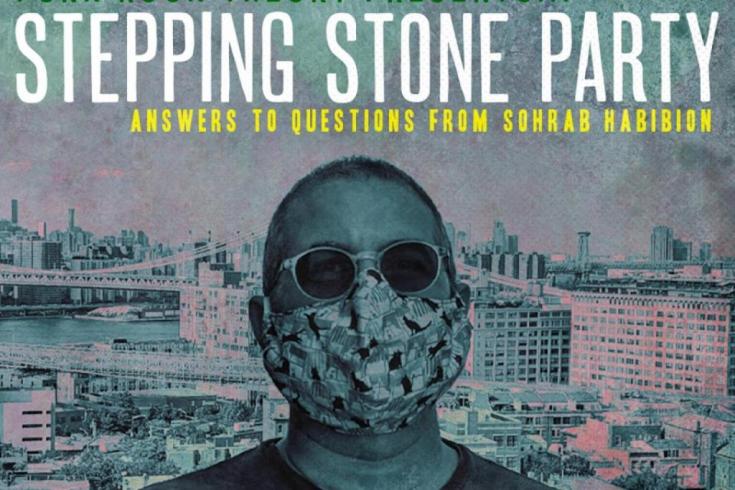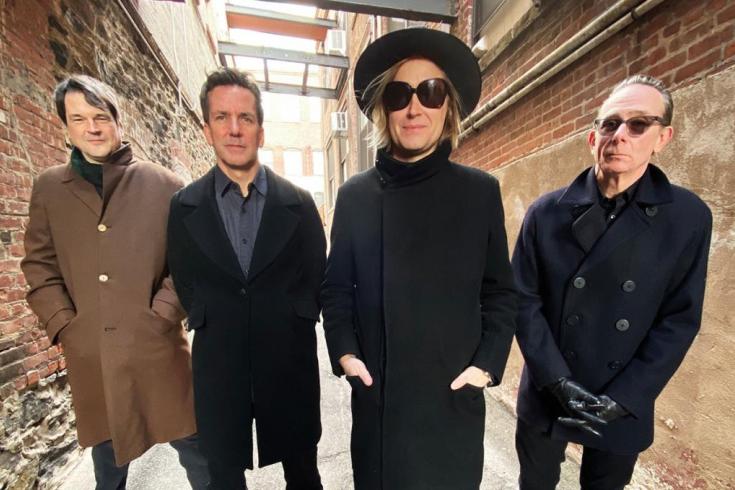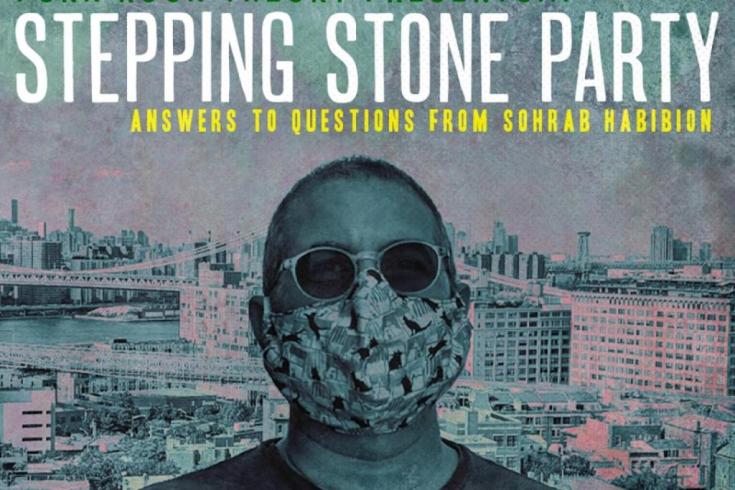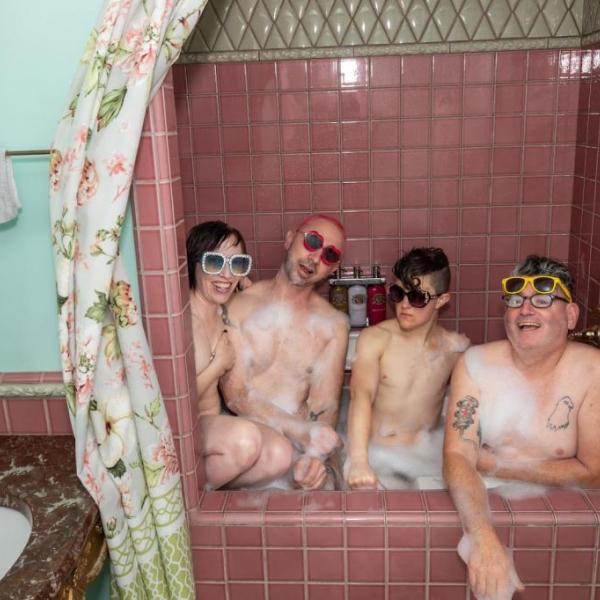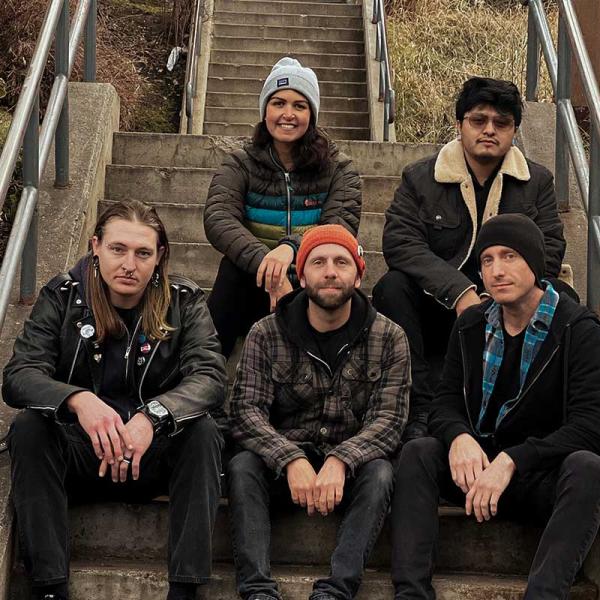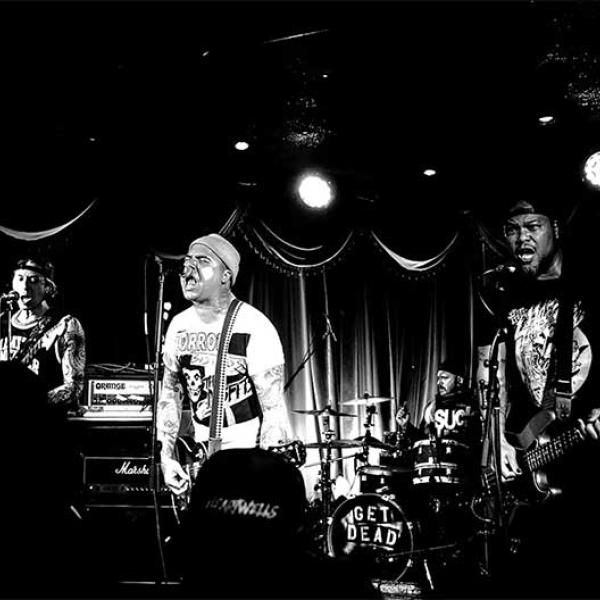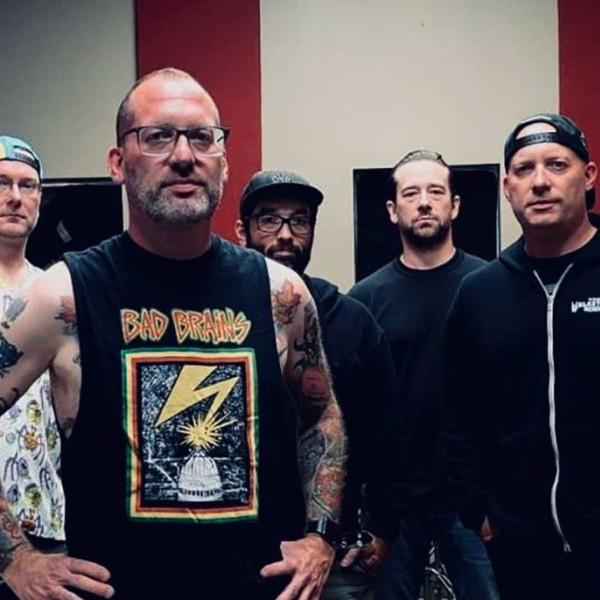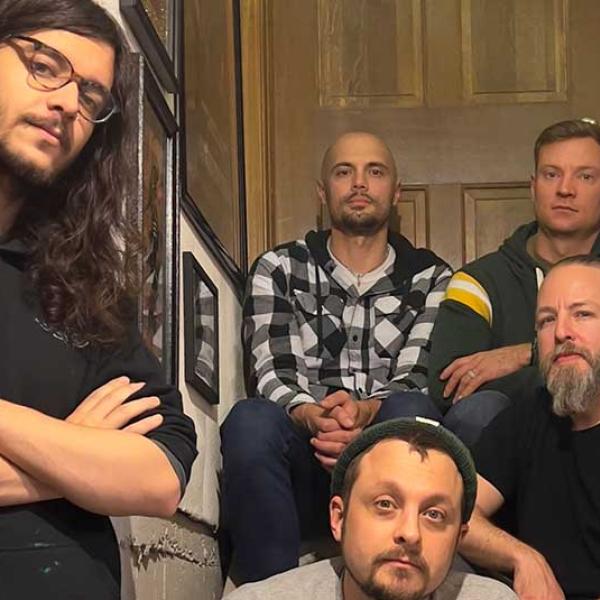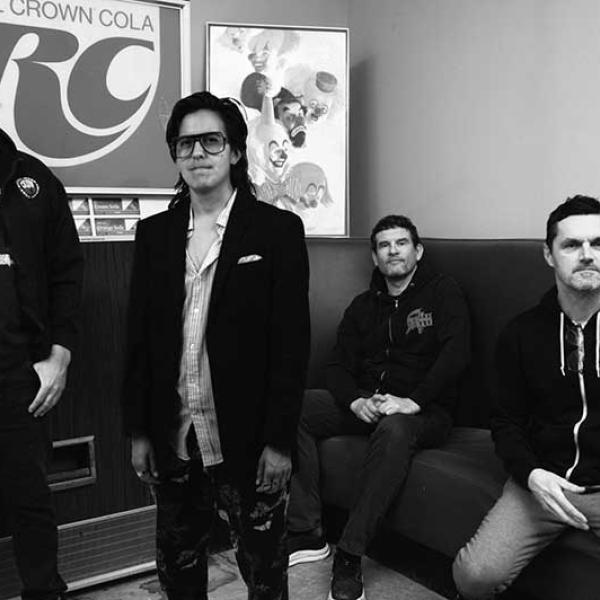Features
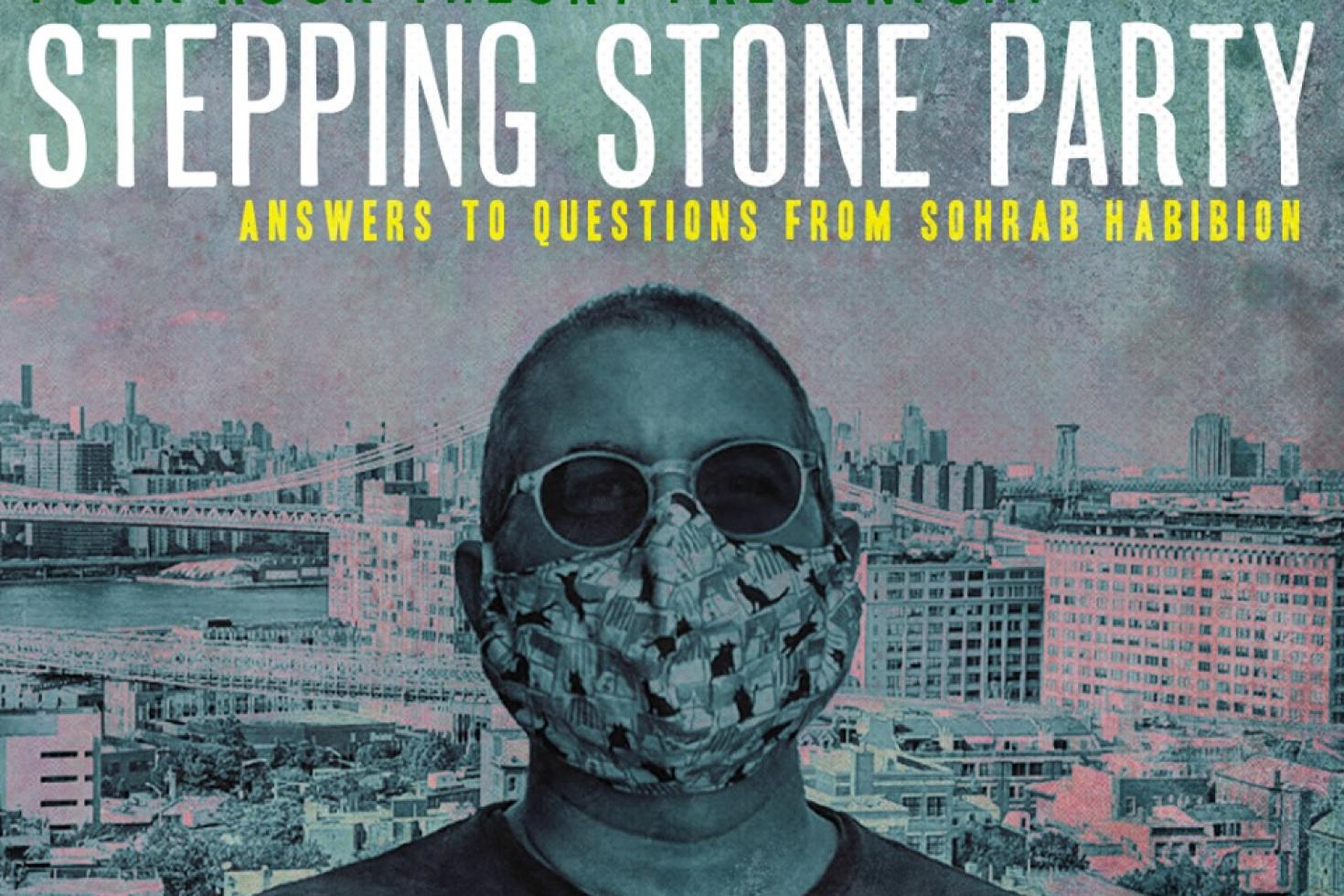
“We should jam!”
I’ve uttered plenty of goofy remarks over the years, but those three words remain at the top end of a currently as-yet-to-exist-except-vaguely-in-my-mind List of Dumb Things I’ve Said to Near Strangers Who Later Became Friends. In the fall of 1987, Michael Hampton and I were both at American University, a private institution in an upscale neighborhood of Northwest D.C. Upon seeing his lanky gait on campus, I strolled over, introduced myself, and then corralled enough consonants and vowels together to besmirch the fine autumn day with the horrifying phrase, “We should jam!” Knowing Michael as I do now, it continues to crack me up 34 years later imagining how disgusted he must’ve been. Anyway, it all worked out.
More importantly in the setting of this Q&A, Michael Hampton’s guitar contributions to the canon of harDCore run deep and remain vital. From S.O.A’s No Policy E.P (Dischord Records #2!) in 1981 to last year’s Fake Names album on Epitaph, you can recognize Michael’s playing instantly. He employs open string droning, the kind of chromatic half steps you might associate with The Beatles, and a mean pickup-switch toggle attack. He also has a robust sense of the funny and the very, very funny.
This Q&A has at least a 1,000 kilograms of links embedded, so please do encourage yourself to click on and tune in during or after you read. I promise you there’s more jams than at The J.M. Smucker Company headquarters in Orrville, Ohio.
SH: Where did you first come into contact with “punk” music? Related, you once told me that Chris Haskett and Donald Keesing were the “slightly older guys” who had the cool/weird/obscure records. Do you remember hearing anything in particular for the first time from either of them?
MH: I first came across the term “Punk” while reading CREEM magazine. I had no idea what that music might sound like, but was intrigued. Post KISS, this seemed like a logical thing to check out. I went to the same summer camp as Guy Picciotto after the 6th grade and we pestered the English camp counselor to tell us what The Sex Pistols were all about. Probably because the name had “Sex” in it. We were not enlightened, but within the year I bought the Pretty Vacant 7” and really liked it. Bear in mind the day I bought that I also came home with Jefferson Starship and the disco version of the Star Wars theme 45’s, so I wasn’t wearing bondage trousers yet. Donald Keesing was a kid in my class who managed to have a few Sex Pistols and Ramones singles, imports with B-sides that were hard to find. I heard the “Did You Know Wrong” by the Sex Pistols at a party where Donald had shown up with his 7 45’s—he was hip to the New Wave, for sure. Chris Haskett was older, went to my high school, and lived in a basement apartment in his parents house near the school. Lyle Preslar, who also went to my high school and was a year older than me, took me over there to hangout and Chris played us Gang of Four’s Entertainment. Seminal musical moment for me. Also why was my school so punk?
SH: Circa S.O.A, were there any guitar players from the punk/hardcore world that you really liked and/or influenced you? Judging from the U.K. Subs cover, I’ll guess Nicky Garratt, but who else?
MH: Probably the same ones I would rate now. Nicky Garratt, Derwood, Captain Sensible, Pat Smear. You probably can’t hear any of those influences because I couldn’t play that well!
SH: About halfway through “Draw Blank” (20 seconds into a 36 second song!) there’s a guitar solo that is super cool and pretty insane. And on other songs from that EP (like “Warzone,” “Gang Fight,” and “Public Defender”) there are what sounds like little overdubbed and somewhat loudly mixed guitar notes/noises, which are jarring in a really catchy way. Were those your ideas? Do you recall what you were thinking in terms of wanting to add those?
MH: My friends and I were overdubbing on cassettes with boom boxes and stereo speakers, so I’m pretty sure I wanted to do overdubs when it came to recording at the “real” studio. What I chose to overdub is little weird, though. Don wasn’t really set up for it (only a 4-track machine), so the overdubs went on live (no this wasn’t 1962). I had to sit on the stairs to the studio with headphones on. On the single I overdubbed that white noise solo (which had worked out much better on the prior demo), one harmonic note, a “Johnny B. Goode” two-note “riff” and a pick slide.
SH: Were the S.O.A songs on Flex Your Head from the “demos” that came out as a 7” in 2014? They couldn’t have been recorded too much earlier than the EP. What’s with the DC obsession of recording “demos”? Wouldn’t it just be a recording that you either released or didn’t release? In the context of punk music, the fact that so many bands made demos always struck me as a comical idea.
MH: The weird thing about that is the “demos” were always better. There was kind of an old school notion about demoing the stuff before you made the record (again this was actually not 1962). It might have come from Skip Groff, who was our guide to all things music business. I’m not sure. SOA recorded the “demo” in December and the “single” in January. But we had new songs on the 45 so, um, glad we did it again? I have no idea why . . .
SH: Speaking of obsessing over things, why are there so many covers of “Stepping Stone” from the early DC years? Was someone a big Monkees fan? Do you have a personal favorite out of the Minor Threat, S.O.A, and Untouchables versions?
MH: When I was in my first “punk” (? kind of) band with Simon Jacobsen and Wendel Blow (later both were in SOA), we attempted to do the same covers as the ones the Sex Pistols had done on The Great Rock 'N' Roll Swindle LP. We didn’t know the actual source material. “Stepping Stone” was one of them. I’m pretty sure the Wilson kids did the same kind of thing, as the The Teen Idles did the Pistols style “No Fun” and the Untouchables did, you guessed it, “Stepping Stone.” We kept playing “Stepping Stone” through The Extorts and SOA and weirdly even the Faith did it at least once live. My two favorite versions are the Untouchables version, the original (unreleased) mix of which was slathered in a Phil Spector-style verb wash, which I thought made it sound super pro (um, not 1962, again), and Minor Threat’s version. They were always so much better than the other bands on the scene and made a big deal about playing the song “correctly”—as in the right key with the right parts, fancy!
SH: What’s your memory of the first hardcore show you went to? What was the first “big” punk show you went to? And where was it? How quickly did you go from seeing shows to playing shows? Bad Brains aside, who were some of the bands you played with and were struck by how good they were as musicians?
MH: I saw Patti Smith play a couple of times when I was 13 or so and they were billed as being kind of punk? Those were pretty big venues. I saw The Clash and The Ramones both in large auditoriums, too. As far as what would soon be called Hardcore, the first show I saw was the Bad Brains playing the front room of The Childe Harold restaurant in May 1980 in front of about 20 people. Mind blowing. By that September The Extorts had played our one and only show and SOA was starting up. Aside from the Bad Brains, the band then that impressed me most in terms of musicianship was DOA (it’s always about the drums for me).
SH: Are you on the left channel or right channel on Subject to Change? That was the first hardcore record for me that made me think about what the guitars were doing. There are all these great, fast little runs and open, ringing strings. Were you listening to different stuff at that point? It’s only 2 years after the No Policy EP, but musically there’s so much more going on. The recording also has a lot more dynamic range—had Don changed the setup at Inner Ear?
MH: Left, but maybe not for every song. I think I was listening to mostly the same stuff, definitely more non punk things too, but also I could just play better. I also discovered the drone. The melodic guitar lines I wrote around ’82/’83 were certainly, er, indebted to U.K. Subs’ Endangered Species LP, the Damned’s Strawberries, The Ruts, The Clash—stuff that was picky and moved around while still basically within a bar chord. Also octave stuff—Wes Montgomery, but punk, not that I knew who that was then . . . Don was constantly upgrading at this point and I think Subject to Change is sonically leaps and bounds above Faith/Void from the year before, but I’m not sure why exactly. It was 8-track by then, though.
SH: The internet reports that The Snakes played live once. True or false? If true, where and when and how’d it go?
MH: This is actually true. The Snakes were a band Simon and I did beginning around the time of the Sex Pistols-cover cover band. The difference was that I played drums and we actually wrote (rewrote Ramones) songs. We just couldn’t play them all the way through. We kept this up, even recording 3 songs during the SOA 45 sessions, 2 of which sounded like SOA and made fun of the music we were actually making in SOA. I know, it’s weird. Most of the Snakes songs were ridiculous: silly words, inside jokes, etc. By 1983 we had recorded a couple of times and someone offered us a chance to open for The Dickies at the 9:30 Club. Why or how escapes me now. As luck would have it The Dickies cancelled so we were spared the humiliation of under-performing in front of our comedic punk heroes. BMO headlined instead. Rounding out the line up was Guy Picciotto on bass and Brendan Canty on keyboards. We wore funny hats, thought we were The Damned, had rock’n’roll stage patter, etc., but we were probably pretty terrible and probably not that funny. Luckily I remember very little about it.
SH: The Snakes have a bit of a Naz Nomad & The Nightmares vibe. What were you and Simon listening to when you were writing those tunes? And why did it take 5 years for the 2nd record to come out?
MH: You’re not far off. We listened to lots of ’60s rock, The Beatles, The Zombies, etc., The Dickies and Captain Sensible/The Damned’s quasi neo-psychedelic punk stuff were big influences. It just came out kind of weird because we didn’t really care about making it that good. Although we thought it WAS good. Lots of half-assed ideas were recorded and it was a lot of fun to do. Ian played a big role in those recordings, but I think the reluctance to release it came down to him not being sure how to release it in relation to the Dischord label. The first LP is on “Discard,” which was a considered sub-label for all of the weird/experimental joke bands that everyone was in—the “Zapple” of DC punk. Jeff Nelson really wanted to put the later stuff out and persevered. It just took a while. The Snakes was very confusing for everyone!
SH: What about Brief Weeds? There are the two 7”s, but aren’t there a bunch more songs recorded? Will they ever the see the light of day? What did you record on? It sounds perfect for the music the way it’s a little murky and the overdubs kind of blanket each other.
MH: Brief Weeds (Guy Picciotto, Brendan Canty, Eddie Janney and myself) was another “project” band similar to The Snakes. More ’60s (or so we thought) and more ’80s psychedelia (so we wished)—kind of like the The Dukes Of Stratosphear, I guess. We recorded it mostly on 4-track cassette with Eli Janney manning the tape. Some of it was recorded in my parents house while they were out of town, over the course of one dusk to dawn session. (Fun fact: After recording all night we got up the next morning to play a matinee show at Food For Thought restaurant - the first show for Embrace, and maybe? the first show for Rites of Spring?) We actually played a live show at d.c.space (wearing a lot of paisley), and did 2 radio shows: one for WMUC and one for the Georgetown University station. There is a LOT of material. Whether anyone would actually like to hear it is a question we can’t answer with confidence, but a compendium release of some sort has been discussed in the past.
SH: Between the Embrace and One Last Wish records I feel like your guitar playing really exploded. You managed to distill the “Dear Prudence” descending chromatic bass notes with the chugging downstrokes and ringing open strings of Bob Andrews and Brian James, neither of whom were afraid to squeeze out a tasty rock’n’roll lead. With both Embrace and One Last Wish there are all these killer licks tucked into the mix. Do you remember who some of the guitar players were that were inspiring to you then?
MH: I joined OLW not long after the demise of Embrace, so I had already written a couple of the songs during Embrace that I added to the mix. They had already been together as a 3-piece, practicing for a couple months. They had 8 songs or so and I had about the same. The “Dear Prudence” descending thing has always been a favorite “go-to” and The Who’s “Our Love Was” on The Who Sell Out is a similar kind of descending thing that I stole from often. Embrace’s “If I Never Thought About It,” for instance. For all of us the newer guitar bands in the mix at this point were That Petrol Emotion, The Smiths and The Church. On the OLW stuff there are EBows, arpeggios, whammy bars, VOX amps, etc. Classic Derwood is still in play, however, and makes an appearance in the riff for “Shadow”—trying very hard for a Gen X vibe on that one. I think some of the reason that there are so many riffs here and there is I had a bunch of ideas I wanted to get down, but in an ideal world they would have been chosen from, not all playing at the same time! Some mix moves were probably in order
SH: With Manifesto you had a couple of NME “Single Of The Week” slots, right? It seemed like there was a moment where that band felt like it was going to step into a larger arena. You played the HFStival, you were getting radio spins, you went to the UK to make your album with John Rivers, you signed with EastWest Records, etc. What happened?
MH: Pretty typical music biz kind of story. We went to England, played some shows and Laurence Bell, who we knew through our UK punk friends, and later started Domino, was at that time working for Fire Records. They offered us a deal and we took it. Why not? But the only label we had dealt with was Dischord, so we were fairly confused right out of the gate. Fire was small and super “indie”-seeming, but it was a different world. “Single Of The Week” was fun, and we got to hear it on the radio driving around London, but soon the label did a deal with Atlantic in the US, and we ended up at East West with no advance and no actual interest from the label. They put the record “out,” but I don’t think I ever saw one in a store. That experience turned my focus to working on soundtracks and electronic studio noodling. Bands were out!
SH: When did you and Brian start writing the songs that became Fake Names? And this is the first time you and Brian have been in a band together despite knowing each other since the days of running around in short pants? And Johnny went to the same elementary/middle school, too? I understand there’s new material afoot. How do you coordinate the writing with the four of you scattered during the pandemic?
MH: Brian was playing a Bad Religion show in Brooklyn about 5 years ago and came over to hangout and run a load of laundry, I believe. I said I had been trying to write an actual song recently and that it sounded a bit like Dag Nasty and he said, “Great! You want to form a band?” “Why yes, yes I do.” We wrote and recorded 3 songs that afternoon at my house, not really thinking it would be a “band”—maybe just some songs for my music library or something. But I was already trying to put together something with Johnny Temple, so he was in the mix early on and, yes, he did go to our school (our school really WAS punk). We spent the next year trying to find a singer we liked. One un-named celebrity singing candidate (who passed) said, “I don’t know, sounds kind of like slow Dag Nasty.” EXACTLY. Brian and I had made a lot of music together in high school. We were constantly recording goofy songs, forming joke bands etc. Simon Jacobsen and Guy were usually in the mix, And we did make an aborted attempt at a Chemical Brothers-style electronic project in the ’90s, but Fake Names is the first “real” band we have been in together. We’re working on new stuff this year, recorded at our houses and a couple of far-flung recording studios (New Jerzy - Brian) (Sweden - Dennis) (DC - Brendan from the Brief Weeds). Looking forward to more.
SH: What’s the story behind your SG? Did you take the Moog electronics out or did you get it that way? And is it true you got another one recently??
MH: The Gibson “SG R1 RD Artist” was an ill-conceived concept guitar, part of a collaboration that put Moog “electronics” into Gibson guitars of all shapes. The Moog circuitry was activated with an extra toggle switch. When I was 15 I convinced my parents that I needed an upgrade from the shattered Memphis Les Paul copy and the buzzy Fender Mustang (bought from Brian and sold to Guy - 75 bucks both ways!). I had borrowed a friend’s Telecaster for most of my stint with SOA (believe it or not), which emitted wailing, squeaky feedback, so that wasn’t working either. My mom and I went to Veneman Music in Rockville, MD and I ended up with the RD. They had quite a few. It was on sale for $350 (no one wanted these) and I didn’t even pay attention to the Moog aspect. I just wanted a black guitar and the price was right. The Moog electronic toggle switch was quickly renamed the “Suck Switch,” as it would instantly make your guitar sound terrible. I’m pretty sure this one fed back all the time, too (I was known for that). I ended up borrowing other people’s SG guitars for most of the Faith until I had the Moog stuff removed and a DiMarzio Super Distortion put in. In the meantime Brian had located his own black RD and the guy who fixed mine put a red light in the toggle switch on this one! This ended up with Eddie Janney, so at one point we were both playing them in the Faith. They are thicker and heavier than a regular SG, with a wider neck. Needless to say, Eddie Townshend-smashed his in an early Rites of Spring performance. There were only 200 made. Like I said, no one wanted them. I recently bought one with the electronics intact and actually used it on the newest Fake Names stuff—it’s very jangly like a, er, Fender. Jason Farrell has one too.
SH: You are the one who played me that killer Cheifs 7” for the first time and I remember when you were living with Peter Hayes behind the 7-Eleven in Tenleytown that the floor of your room was lined with tons of 7”s. What are a few crucial-but-underknown punk 7”s that you can recommend?
MH: What the fuck happened to my Cheifs 45! It’s worth like $1k now . . . One of the cool things about buying/collecting records when I did was what you ended up really liking could very easily have been a random purchase—“this cover is cool, wonder what it sounds like?” Quite a few of my favorites I bought without hearing. Keep in mind I also had access to the well-curated collections of Ian and Henry, who turned me on to more cool records than I could list. A few I would recommend, although most are pretty well known now, are:
Dils - You’re Not Blank
Crisis - White Youth
The Mob - Witch Hunt
The Scars - Horrorshow
The Last Words - Theres Something Wrong
Skunks - Good From The Bad
Empire - Hot Seat
Satan’s Rats - In My Love For You
Pure Hell - No Rules
The Middle Class - Out Of Vogue
SH: I know that you are also an avid reader. What are a couple of books you read this last year that were really good? And one music biography?
MH: I’m on a noir/mystery kick at the moment. I read a bunch of the Per Wahlöö Maj Sjöwall books this year—atmospheric Swedish mysteries written in the ’60s and ’70s. I also quite liked Blacktop Wasteland. The Frampton bio is great. He did a lot. Kind of an underrated guitar player in my opinion and who doesn’t like “Show Me The Way”? Well, maybe some FOOLS!
SH: Ok, ok, one more . . . I believe you have purchased compilation CDs just for one song because it wasn’t available somewhere else (I’m thinking of Roxy Music). What’s the most ridiculous example of that? Like a whole box set for one B-side or something . . .
MH: That’s probably true. What I really hate is the opposite. When box sets or expanded editions come out missing certain B-sides, etc. For instance, the ONLY Boomtown Rats song I like is a B-side called “It’s All The Rage,” which is NOT included in the reissues. Why? Or “Real Fun” by Tenpole Tudor on CD? Doesn’t seem so. Before this last Generation X 1st LP reissue came out, the only way to get a digital copy of “No No No” (fantastic B-side) was an Australian comp from the ’90s. I never tracked that down, but Henry Rollins was kind enough to send it to me. Oh and the older mastering of that comp is better than the reissue, but that’s a whole other thing with me.



